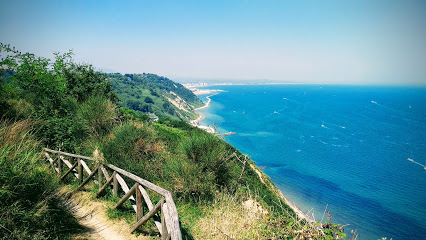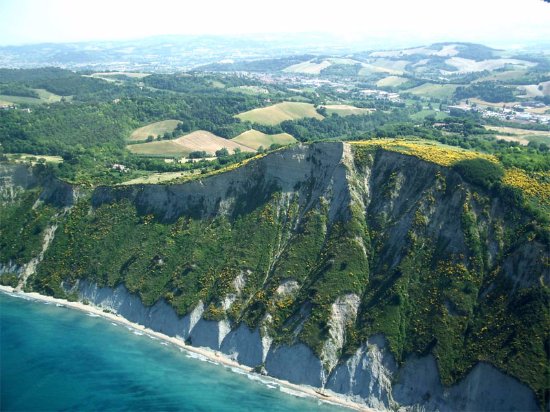The San Bartolo Natural Park has very suggestive natural features, including the blossoming of the aromatic brooms (Spartium junceum), which in May cover the cliffs of the hills overlooking the sea with golden yellow and a small slope with thatched areas (Arundo pliniana) that spread evenly to the beach, coast Pebbled which often forms a thin strip below the transparent walls. After ancient use by man, vegetation occurs first of all in the initial stages, and even if in the valleys settle more sophisticated formations, some small forests, also exciting for the presence of oak (Quercus cerris), are present on the inner side. Although it is not possible to deal with Mediterranean scrub because the climate is still mild, there are examples of Mediterranean species such as alaterno (Rhamnus alatemus), Phillyrea (Phyllirea media), and smilace (Smilax aspera). ). The zoo is also relevant to animals: especially in winter, when the disturbance of recreational activities and fishing is smaller, it hosts a large number of seabird species. Many unfamiliar seagulls can be observed such as gavina, seagull, three-finger gull or saffron, but also cormorants, small carp, large follicle, small follicle, smaller girby, little girby, or little girby. In spring, migration is particularly interesting when the park, especially in the cliff area, is affected by a prominent step of raptors: Harris, swamp carriers, honeybirds, hummingbirds, butyls, rare lizards, as well as barn owners and storks. , Both black and white. With a little attention and patience, it is also possible to observe a phenomenon that is not rare or unknown, namely the arrival of migratory butterflies such as beautiful vanesies, from the sea, which reach our shores in the spring. A pebble beach, which is a practically unique model along the Adriatic coast, contains very special plants and animals, with molluscs, crustaceans, fish and other organisms typical of the rocky layers, including Chiton or Haliotis.
x
T
R
F
I
H
I
We have 16614 Parks Now ... The First and largest platform for green public parks
Parco Naturale Monte San Bartolo
Parco Naturale Monte San Bartolo
Province of Pesaro and Urbino, Italy
Every Day : 24 Hours .
About Park
-
Preview
Runs along the Adriatic SeaImportant Information
-
Every Day
24 Hours -
Foundation Date
1/1/1994
-
Every Day
-
Intertainment Elements
Sports
Sitting places
Entertainment
Trips
Kids area
-
Main Elements
- Cleanliness
- Green areas
- Open spaces
- Open paths for walking



